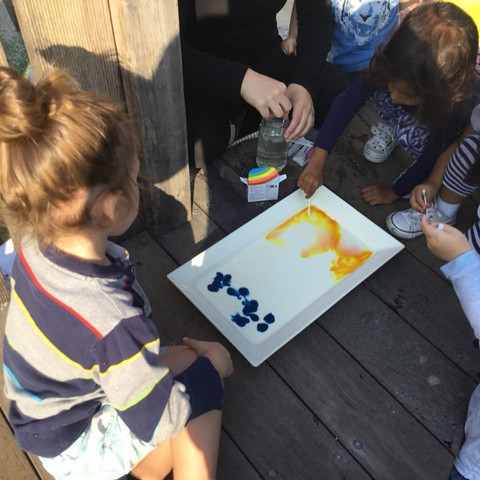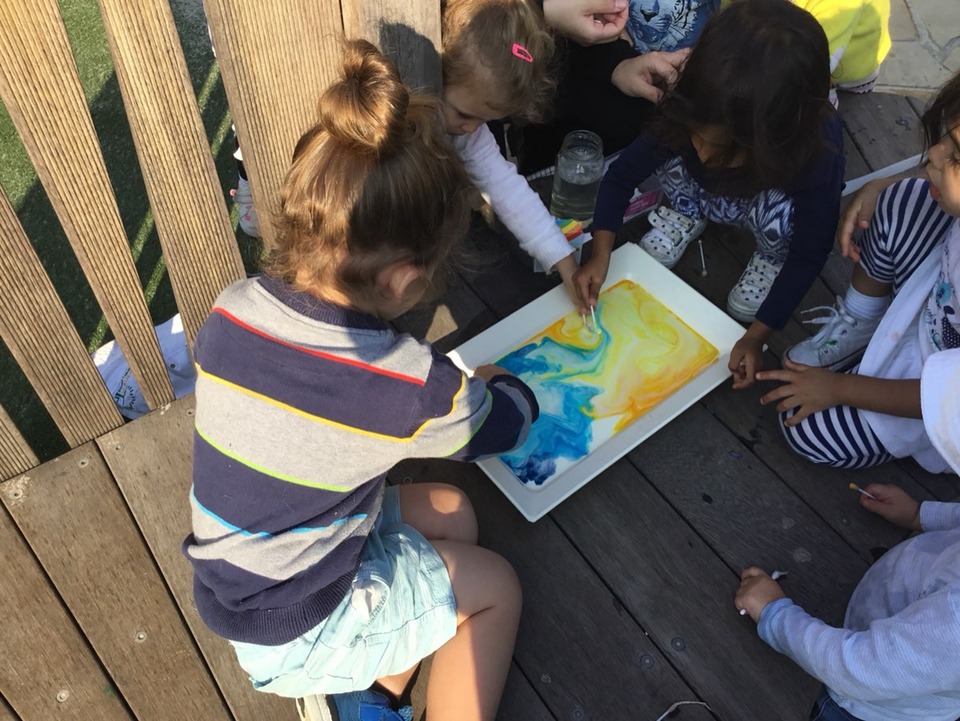STEM Learning: Colour changing milk experiment
- Sophia Vidovic White
- Feb 25, 2019
- 2 min read
Friday 6th April, 2018
Today, we are continuing our colour recognition project and decided to imbed science into our experiment as well as look at how prime colours can mix together to create secondary colours. We wanted to observe the chemical reaction between milk and dishwashing liquid and how these ingredients repel when placed together. The ingredients used today include, liquid dish soap, food dye, milk and cotton buds.
First we poured some milk into the shallow dish and added approximately 5-6 drops of food colouring into it. We prepared the liquid dish soap in a small bowl, adding a small amount of water and mixed this in with the end of the cotton bud. We then placed the buds into the dish and watched the chemical reaction between the soap and milk. The food colouring began to swirl and move around the plate once the dish soap soaked cotton bud was added. It appears to work like magic and is fascinating to watch as the many shades of colours start forming, combining and also separating leaving the bright white of the milk.
We could observe how the coloured food dye disperses outwards to the side of the plate. We can learn that the dish soap bonds with the fat in the milk. This bond is so strong that the water and food colouring are pushed out.
The swirling effect is everything else moving around to make room for the dish soap and fat bond.The children were using descriptive language to express ideas and opinions. Maia said, "It's moving away from me". Harry said "Colour" and Wolfe said "It's mixing". Olivia commented "Making new colours".
The learning outcomes were that the children had the opportunity to practice using hand eye coordination, understand cause and effect and to practice their concentration skills. We could observe the children using scientific thinking through predictions, observations, comparison, reasoning, data gathering, experimentation and evaluation of what they had done.
We could extend the learning by experimenting with different types of milk, such as soy milk, coconut milk, chocolate milk or butter milk. We could also learn about mixing colours (i.e add only red and blue food colouring to make purple, yellow and blue to make green and red and yellow to make orange). The swirling effect mixes the colours together making a new colour.
























Comments